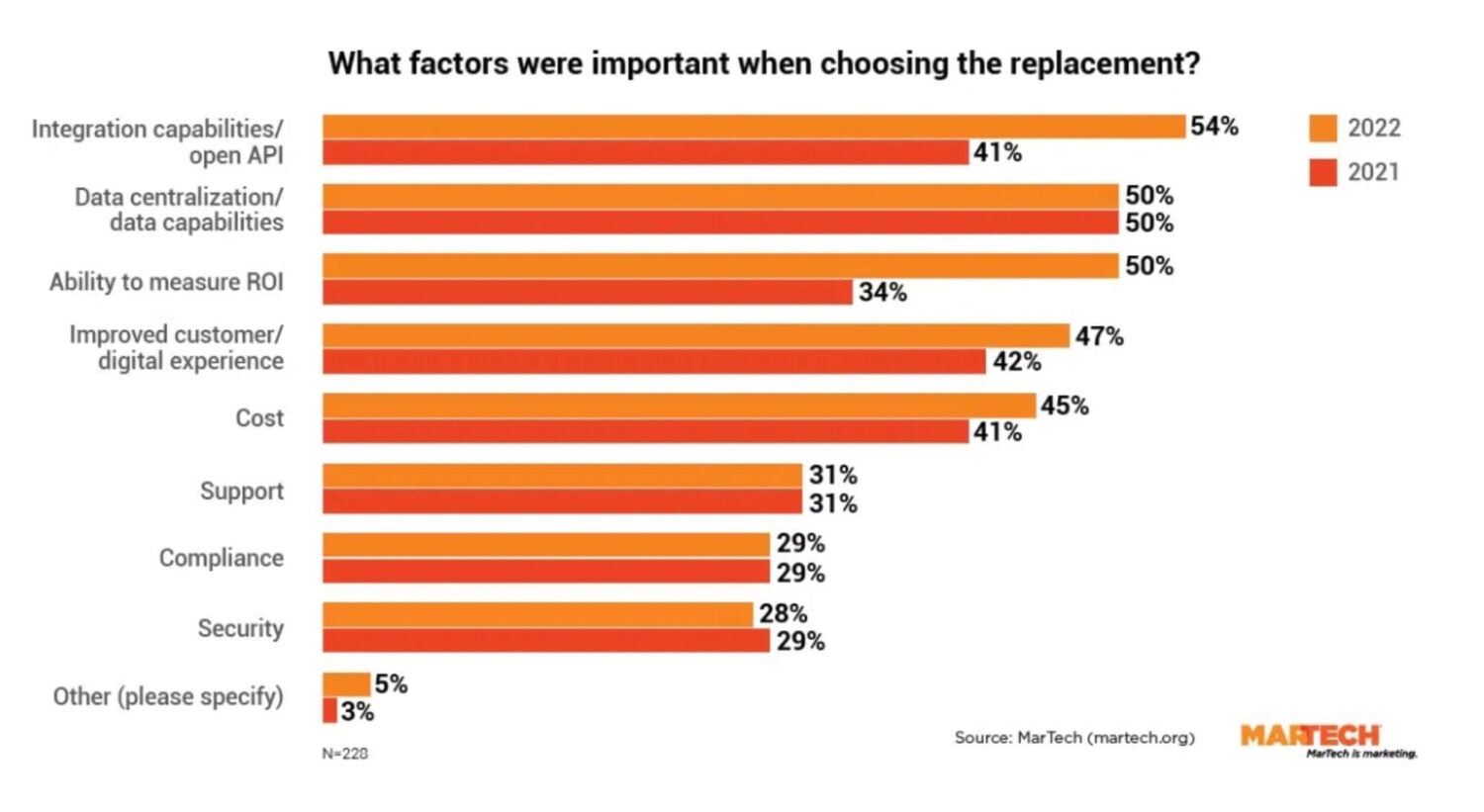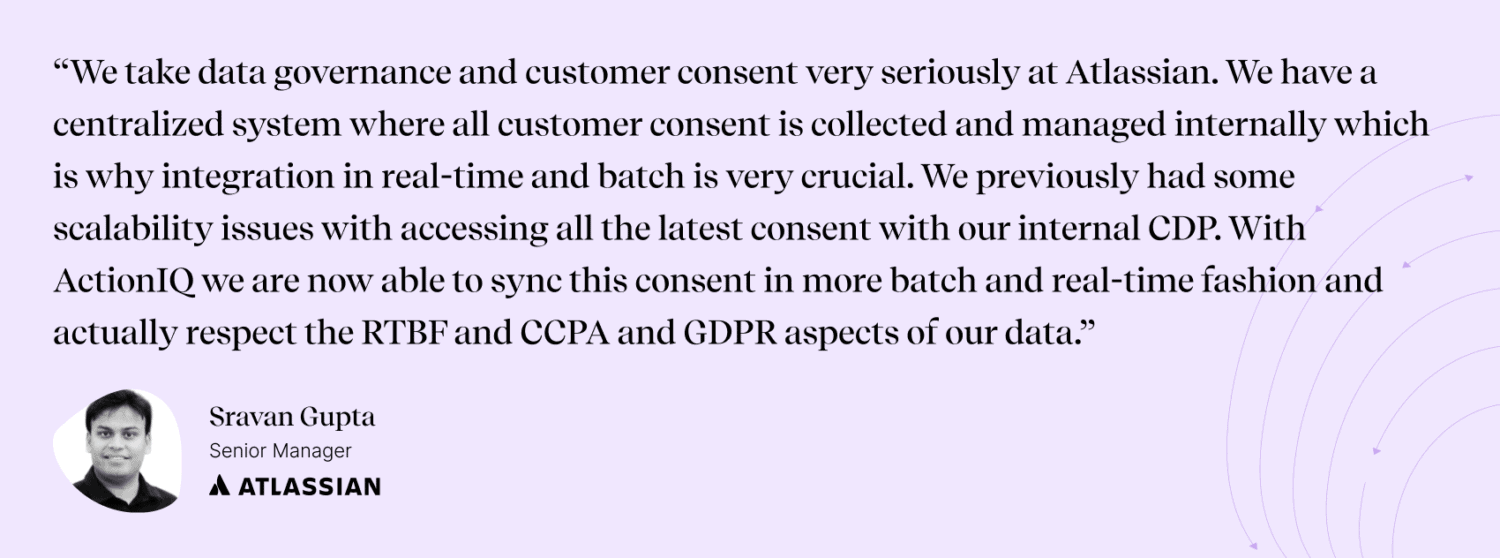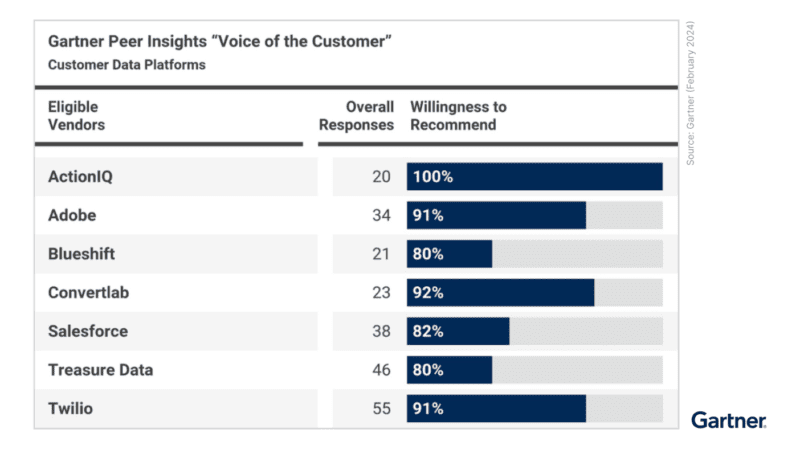Quality Over Quantity: Top 6 Criteria to Evaluate CDP Integrations

As a powerful tool for collecting, managing, and utilizing customer data, customer data platforms (CDPs) are becoming an increasingly popular investment for brands looking to increase the value of their customer data stack and improve its data operations. But here’s the catch: brands need to make sure that selected tech plays nicely with all the other tools in your marketing arsenal. That’s where CDP integrations come in.
For enterprise buyers evaluating marketing technology like CDPs, whether it is adding or replacing a solution, having the ability to integrate is the number one criteria they look for.

When it comes to integrations, quality of the integration is more important than quantity. A long list of integrations may seem impressive, but if they aren’t seamless, relevant and guaranteed to work, they aren’t going to help your business. That’s why it’s essential to strategically approach the integration process to avoid costly and time-consuming integration issues down the line.

Breaking Down the Hurdles
As noted by an Ascend study, integrating disparate systems is one of the biggest hurdles that marketers face in achieving success with marketing technology, with 36% of marketers citing this as a major challenge.
To support growth and evolving business needs, IT teams are heavily invested in ensuring that integrations are properly configured, secured and running efficiently. According to a recent Digibee study, integrations can consume up to 25% of enterprise IT budgets, which is a substantial cost.
No wonder why, when looking at the complexity to get integrations right:
- Integrating two systems requires a deep understanding of the data structures, APIs and business logic of each system. This involves complex data mapping and transformation to ensure that data flows accurately and consistently between the systems. The design of the integration must take into account various factors such as scalability, and security and data governance.
- Building an integration may require significant custom development work. IT teams may need to build custom connectors or middleware to facilitate data exchange.
- Testing and quality assurance are critical components of building a reliable integration. This can be time-consuming, particularly if the systems being integrated are large and complex.
- And the work doesn’t end once an integration is built. Integrations need to be maintained regularly to ensure they continue to function as intended. Legacy systems are typically easier to maintain as they tend to have more stable and established APIs and data structures, plus they are less likely to undergo significant changes or updates. However, it’s a different story for the newer business applications in the CX stack, which require more attention, like social networks (e.g., Meta) continuously introducing changes impacting your integration.
Top 6 Criteria to Consider When Evaluating CDP Integrations
To truly capitalize the impact that seamless integrations can have on the business, teams evaluating a CDPs should keep in mind the following six criteria: scale, flexibility, ability to customize, speed, accuracy and reliability.
1. Scale
To achieve seamless and consistent data flow between two systems even under heavy workloads, a scalable integration is essential. This is particularly important for B2B organizations that handle large volumes of data, or any organizations that experience seasonal traffic spikes, such as e-commerce websites during the holiday season.

2. Flexibility
The level of flexibility allowed in the integrations matters, which should include the following elements:
- Support all data sources, destinations and formats to minimize the manual work needed to manipulate the data, saving time and resources.
- Support various integration types for getting data in and out between systems, and provide users with options — pull-based (API, Direct Query via JDBC) or push-based (API, File) — so organizations can choose the option that best fits their unique workflow.
- Support bidirectional data sync to enable data to flow back and forth between two systems, allowing businesses to pursue a wider range of use cases.
More recently, with the maturity of cloud data warehouses, a new architecture approach is gaining momentum: deploying a composable CDP directly integrated with the customer data source of the truth system. Brands interested by the benefits of the composable approach should carefully evaluate the different composable CDP options on the market and keep in mind that not all reverse ETL solutions promoted are created equal.
3. Ability to Customize
Packaged connectors sometimes fall short of meeting the specific workflow requirements of the business, which emphasizes the importance of CDP vendors being able to and willing to create custom integrations that cater to the unique needs of their clients. Custom integrations ensure optimal performance, and future-proof the CX stack by enabling integration not only with current applications but also new ones added to a stack.
4. Latency
Latency — the time it takes for data to travel from one system to another — is a key factor in determining integration speed, directly affecting the efficiency and effectiveness of data transfers between systems.
To support real-time use cases requiring quick data processing for timely decisions, low latency integrations are non-negotiable. This means a robust data pipeline within the CDP for fast workload processing, as well as managing rate limits during data ingestion and activation. It’s important to note that strict rate limits in downstream systems could potentially restrict data transfer speed, especially when dealing with large data volumes.
5. Accuracy
A high-performing integration is able to maintain data accuracy and consistency across various systems. The occurrence of errors during data transfers should be minimized to ensure the accuracy of the transferred data, which is crucial for enabling effective business processes and generating accurate insights.
6. Reliability
In addition to standard SLAs, CDP vendors meeting the requirements for reliability should have monitoring and alerting for integrations in place that enable client’s IT teams to approve changes in the integrations without having to maintain them directly. This approach allows users to adopt and manage the application with consistency and control, while reducing manual steps and cutting operational costs. By having reliable integrations, businesses can avoid downtime and minimize the risk of errors, ensuring that their operations run smoothly and efficiently.
Seamless CDP Integrations: A Key Priority for IT and Business Growth
Invest in well-designed and well-maintained integrations through collaborating with the right CDP partner — and reap its benefits.
As per the Digibee study, half of all companies rebuild six or more integrations each year, and 79% of new integrations cause significant downtime, which can easily cost more than $1 million per hour.
With seamless integrations, IT teams will see a reduction of manual work and costs required to create and maintain CDP integrations, which is often seen as less exciting or glamorous compared to other projects. By freeing up IT resources for CDP integrations, engineering teams can focus on innovation to help drive business growth.

Business users no longer have to navigate the friction as they interact with multiple platforms within their martech stack. The seamless CX provided by the CDP integrations leads to improved productivity and performance, and ultimately better business outcomes.

Streamline Your CX Stack With Seamless CDP Integrations
Don’t be swayed by CDP vendors who boast about offering thousands of integrations. The focus should be on having the right catalog of integrations, not necessarily the biggest one.
By carefully evaluating the system integrations the CDP vendors provide based on the six criteria outlined above, IT teams can ensure that they choose a vendor that not only provides the necessary capabilities but can also smoothly integrate with the rest of their CX stack. This leads to a more efficient and productive organization, where teams and processes work together seamlessly.

Learn How AIQ Integrates With Your CX Stack
ActionIQ CX Hub is designed to work alongside your existing technology by integrating harmoniously with your CX stack.
Check out our ActionIQ Integrations Brief or contact us to learn how ActionIQ helps organizations maximize the value of their existing technologies by seamlessly integrating with a wide variety of both homegrown and vendor-provided solutions.





